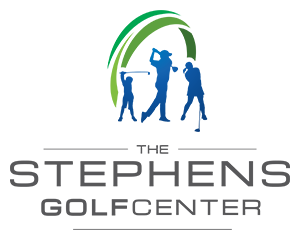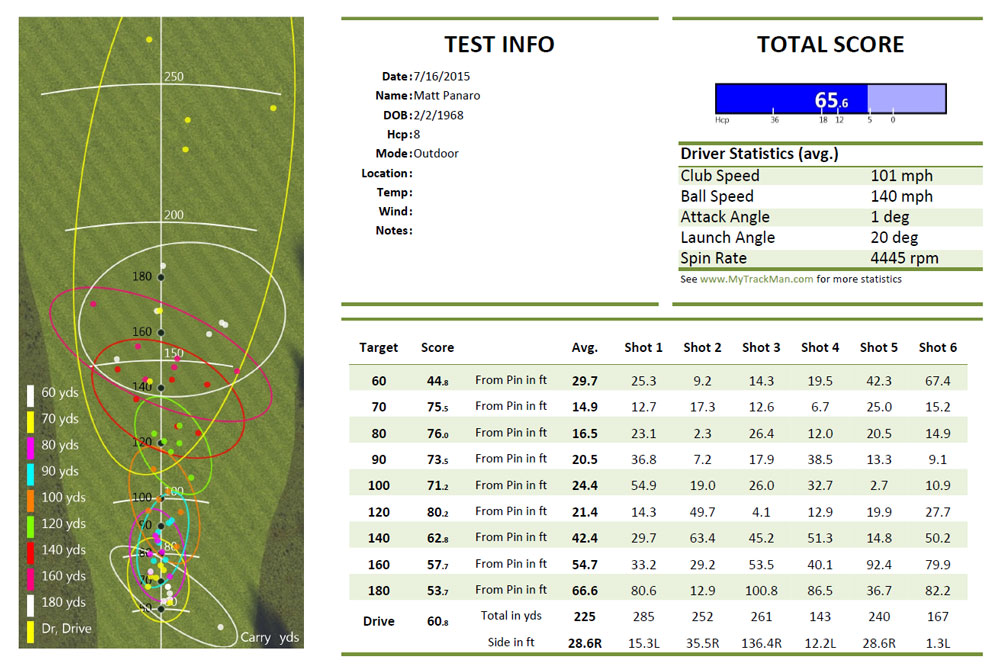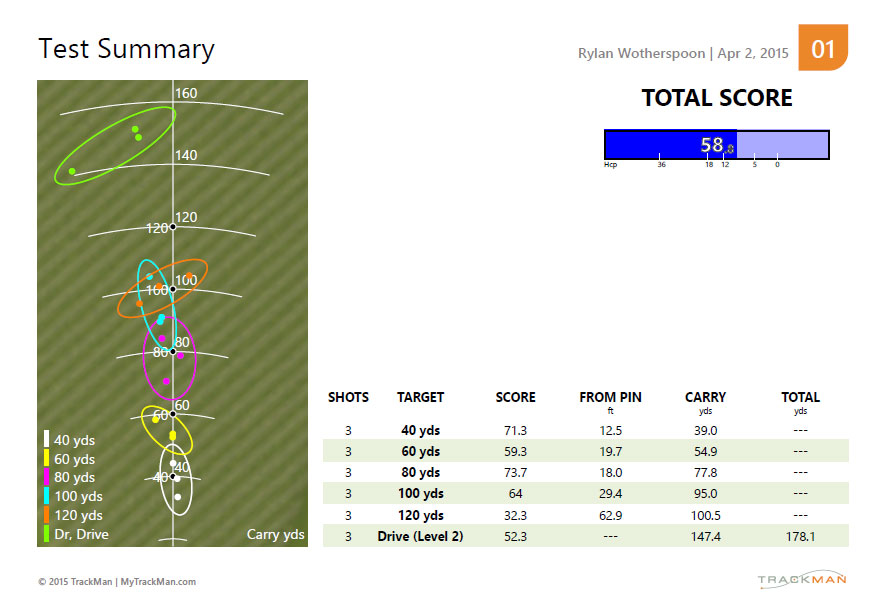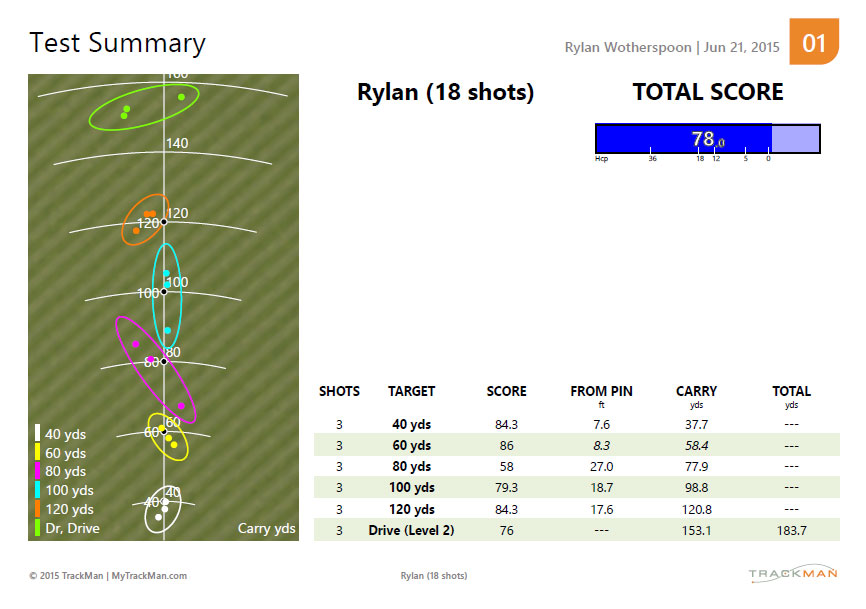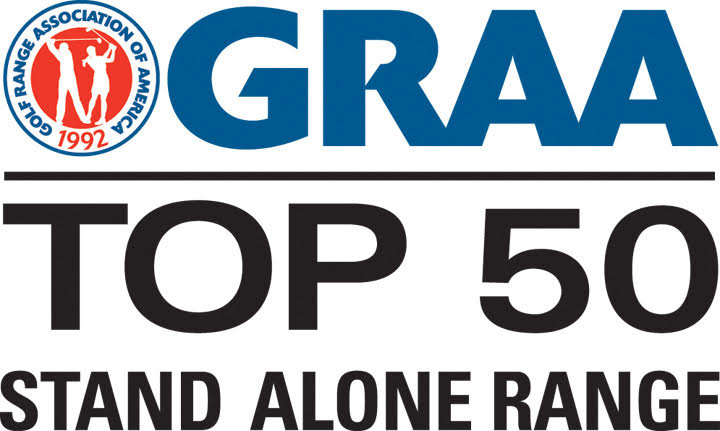Trackman
Academy Menu
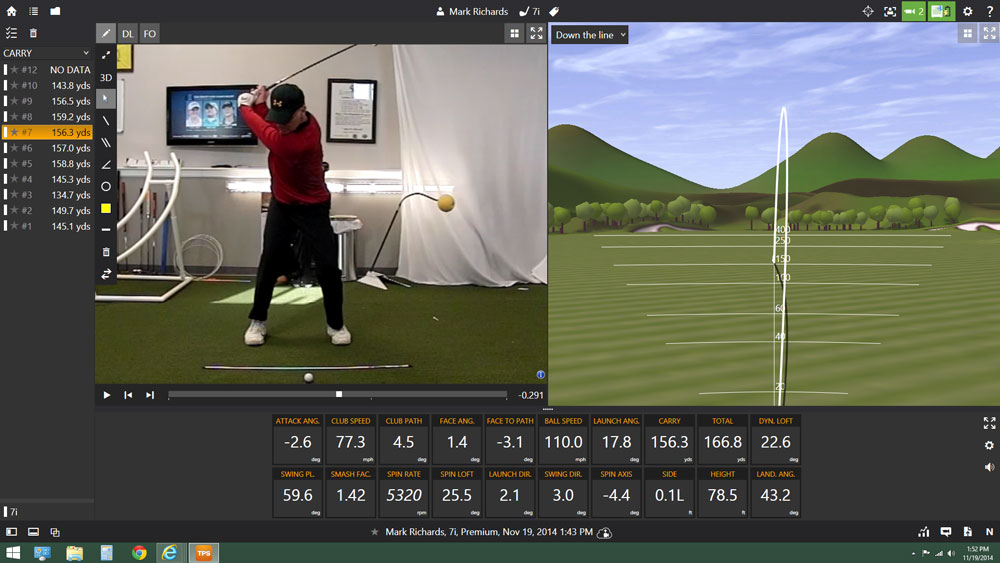
Trackman Introduction with Nick Faldo.
Many golfers have heard of Trackman but very few know what it actually does (and doesn’t do). TRACKMAN uses the same military Doppler radar technology which tracks a missile in flight. Engineers in Denmark adapted the missile tracking technology producing a product capable of tracking a live golf ball in flight accurate to 1 foot per 100 yards; making TRACKMAN the most accurate radar technology on the planet. TRACKMAN is the ONLY radar technology on the market which tracks a ball in flight from start to finish.
Every other radar on the market takes the first 18 inches of a shot and then extrapolates the shot thus creating a far less accurate measurement than TRACKMAN provides. Many devices provide swing speed or estimate the total distance of a shot, but no device in golf provides the amount of accurate data and feedback that Trackman does. Trackman is used by over 100 PGA Tour professionals including 3 of the 4 major winners in 2013 (as well as Tiger Woods and Rory McIlroy), all major manufactures to test their equipment and fit their players, and the PGA Tour to produce the majority of their statistics.
How Does Trackman work?
A player hits a shot and Trackman measures 26 individual parameters (seen below) giving the player valuable data regarding their flight and swing which when understood properly, can exponentially improve a players fundamental understanding of ALL the cause and effect relationships which exist in the golf swing. You can simply think of Trackman of advanced diagnostics for your golf swing. Trackman measures the club and ball data at an astounding 2000 Frames Per Second and provides data that is impossible to accurately determine with even the most high end video cameras.
As you go through the process of beginning to understand the data and feedback which Trackman provides the better your foundation of knowledge will be when trying to assess what happened on each shot but more importantly knowing where your “miss” on the golf course comes from and how to correct it immediately.
Trackman technology is currently available with lessons from Andrew Stephens and Sara Stephens, Trackman Certified Professionals.
Trackman Myths
Trackman makes lessons too complicated.
FALSE. Trackman simply reports data to the instructor. As a student, you should want your instructor to be an informed as possible regarding your golf swing. Without Trackman we are left only with educated guesses. Trackman has allowed me to become much more of a feel teacher because the only thing we focus on with trackman is impact and the flight of the ball.
Trackman will give me too many swing thoughts or will make me too technical.
FALSE. Trackman does nothing other than collect and report data. Trackman provides NO swing solutions or advice. How the data is used is completely instructor dependent. Students have the option to learn as much or as little about the technology as they wish. Some of my students learn as much as they can about their numbers, some choose to let me view the data and trust me to interpret it and apply it to their instruction. No matter how you choose to approach it, it will make golf simpler and take you to new levels with your golf game.
Trackman tries to make everyone swing the same way.
FALSE. It’s impossible to tell the visual difference of Jim Furyk and Adam Scott hitting a 7 iron with Trackman. Both players produce world class impact, and that’s our only goal. You will learn how to feel your desired swing by using Trackman. Some players prefer to hit a fade, some a draw. Either way, we will utilize Trackman to learn how to create the impact conditions required to hit the desired shot.
Utilizing Trackman within my instruction will make golf simpler, improve your ball striking, and allow you to have more fun….GUARANTEED!
Trackman Fundamentals
Trackman measures 27 different data parameters that tell us everything that the golf club is doing through the impact zone and everything that the golf ball is doing in flight. Each parameter has value in our improvement process, but understanding Club Path and Face Angle is essential for the student to know why their golf ball flies the way it does, and how to change it while on the golf course. Below are explanations of Club Path and Face Angle. Also included is a video explaining how Club Path and Face Angle determine ball flight. For a full list of definitions of all of Trackman’s data parameters, click here
CLUB PATH
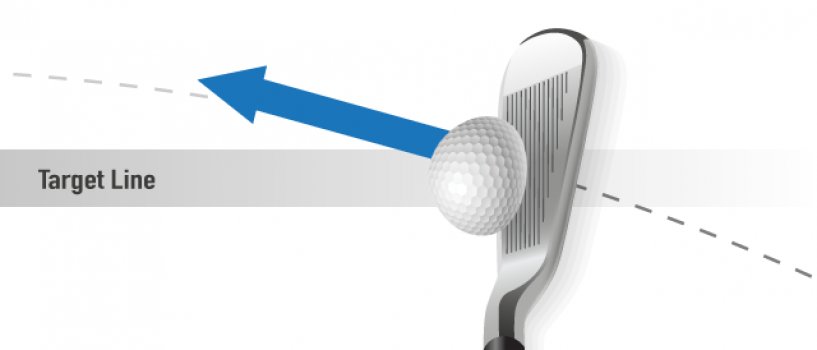
Club Path is the direction the club head is moving (left or right) at impact.
Most golfers relate this number to hitting the ball “in-to-out” or “out-to-in”.
A positive value means the club is moving to the right of the target at impact (“in-to-out” for a right-handed golfer) and a negative value means it is moving to the left of the target (“out-to-in” for a right-handed golfer).
To hit a straight shot, the club path should be zero. The club path is part of what influences the curvature of the shot. It also is part of what determines the ball’s starting direction.
An “in-to-out” club path is necessary to hit a draw and an “out-to-in” club path is necessary to hit a fade. The optimal club path depends on the type of shot the golfer wants to play. A golfer may want to hit a 5 yard fade, straight shot, or 10 yard draw. Each of these shots has its own optimal club path.
Face Angle
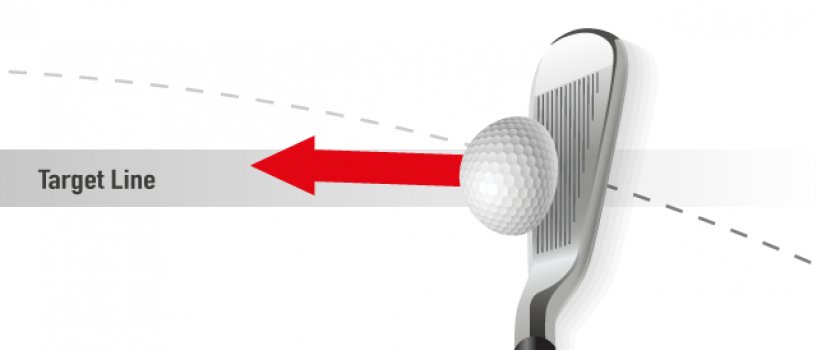
Face Angle is the direction the club face is pointed (right or left) at impact
Most golfers refer to this as having an “open” or “closed” club face.
A positive value means the club face is pointed to the right of the target at impact (“open” for a right-handed golfer) and a negative value means the club face is pointed to the left of the target (“closed” for a right-handed golfer).
Face angle is the most important number when determining the starting direction of the golf ball. The ball will launch very closely to the direction the club face (face angle) is pointed at impact.
To hit a straight shot, the face angle should be zero. The optimal face angle depends on the type of shot the golfer wants play.
A golfer may want to hit a 5 yard fade, straight shot, or 10 yard draw. Each of these shots has its own optimal face angle.
Face to Path
Trackman Test Center & Combine
Trackman not only provides ball and swing data, it allows a student the opportunity to test and hone their skills with test center and the combine. Test center is used to identify strengths and weaknesses in a player’s long game. Tests can be tailored cover shots ranging from 2o yards to tee shots. Many golfers do not know how far they actually hit the golf ball, and therefor costs themselves valuable strokes on the golf course by mis-clubbing. Test center will show us whether a student has a typical yardage miss, or whether there is a yardage range that needs improvement. Test center is particularly valuable with wedges. Even top level amateurs’ results typically suffer when they are asked to hit a wedge a less than full yardage. Test center allows us to monitor a student’s progress over time with concrete data. We work to dial in distances with the scoring clubs using Trackman so that every yardage is a perfect yardage.
The Trackman combine is a standardized test with 60 shots ranging from 60 yards to tee shots. After completing the combine, the player will receive a full report of their data. Using mytrackman.com, the player can compare their scores to PGA Tour players as well as view a global leaderboard that features players of all ages and handicaps. If a player is a 10 handicap and has the goal to become a 5 handicap, we will look at a 5 handicap’s report online and identify areas that the student can improve to bridge the gap. The Trackman combine is a fantastic skills assessment and training exercise.
Nick Faldo and Jason Dufner talk about using the Trackman Combine.
European Tour player James Morrison and his coach Hugh Marr using Trackman Test Center.
Gaining Distance with Trackman
Every golfer wants to hit the ball farther. With Trackman we now can pinpoint a student’s optimal distance with each club based on their club head speed. Once we know that, we can then examine why a student may not be reaching their optimal distance.
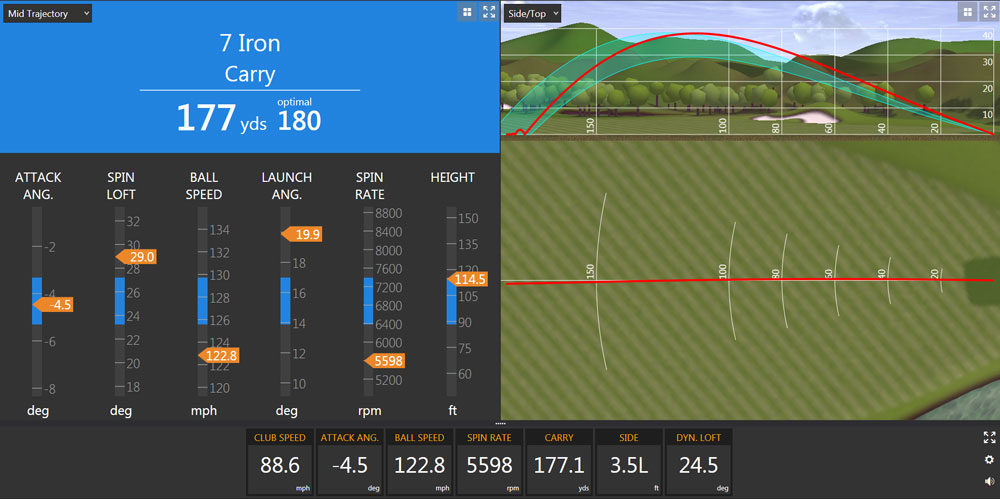
Often times with the driver, a better combination of launch conditions can create massive distance gains, even without swinging the golf club any faster.
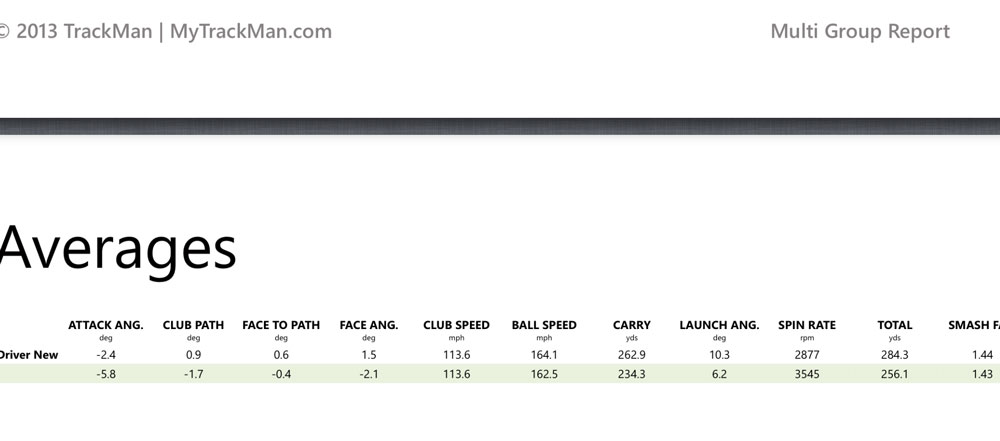
Club head speed is important for hitting the ball far, but many students are leaving valuable yardage in the bag due to poor launch conditions. With Trackman, our average student will gain at least 10 yards off the tee by improving their Attack Angle, Launch Angle, Spin Rate, Ball Speed, and Smash Factor. Every golfer wants more distance, and with Trackman we can deliver it!
Hit it Straighter with Trackman
Distance is important, but without accuracy it does the golfer no good. With Trackman, we constantly work to provide the optimal club path and face angle so that the student can hit the desired shot. By knowing exactly what the golf club is doing at impact and how the ball is responding, we can make changes to improve side to side dispersion.
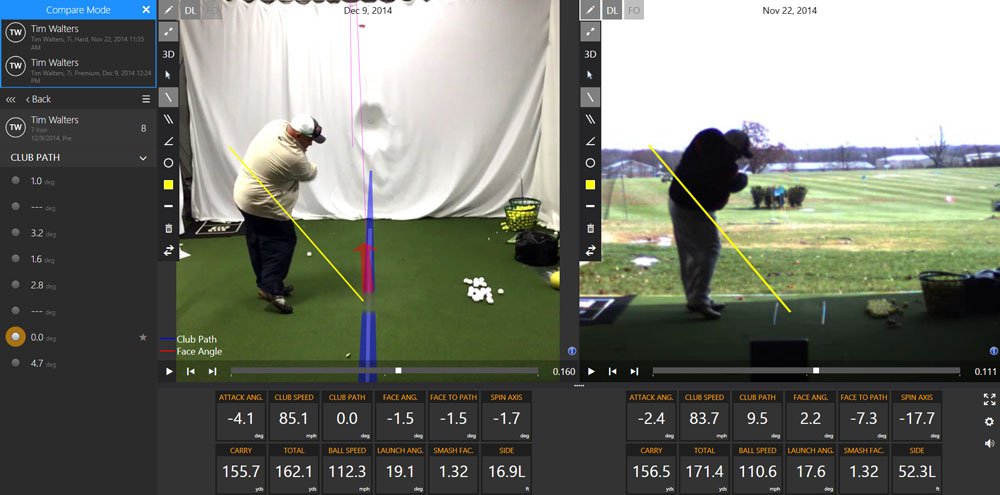
Two dimensional video is extremely helpful for analyzing impact conditions, but often times it can be difficult to see everything that is going on. With Trackman, the student will learn exactly what happens at impact when they hit a shot that they don’t like, as well as what happens when they hit the perfect shot. Trackman helps the student establish their own feel. We don’t allow the student to become reliant on the numbers, rather we use the numbers to educate feel. Once the student has a better understanding of the relationship of the club path and the face angle, they will have a much easier time making the golf ball do what they want it to do and adapting on the golf course.
